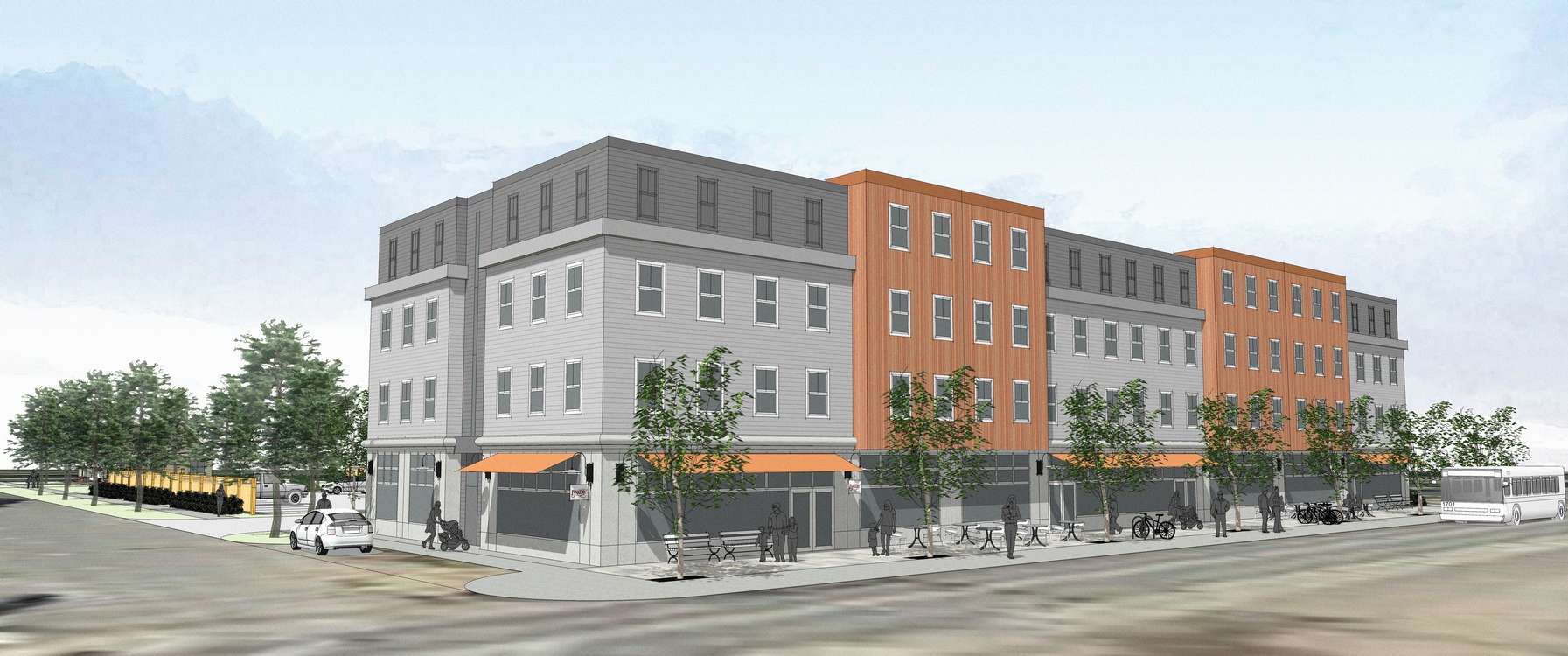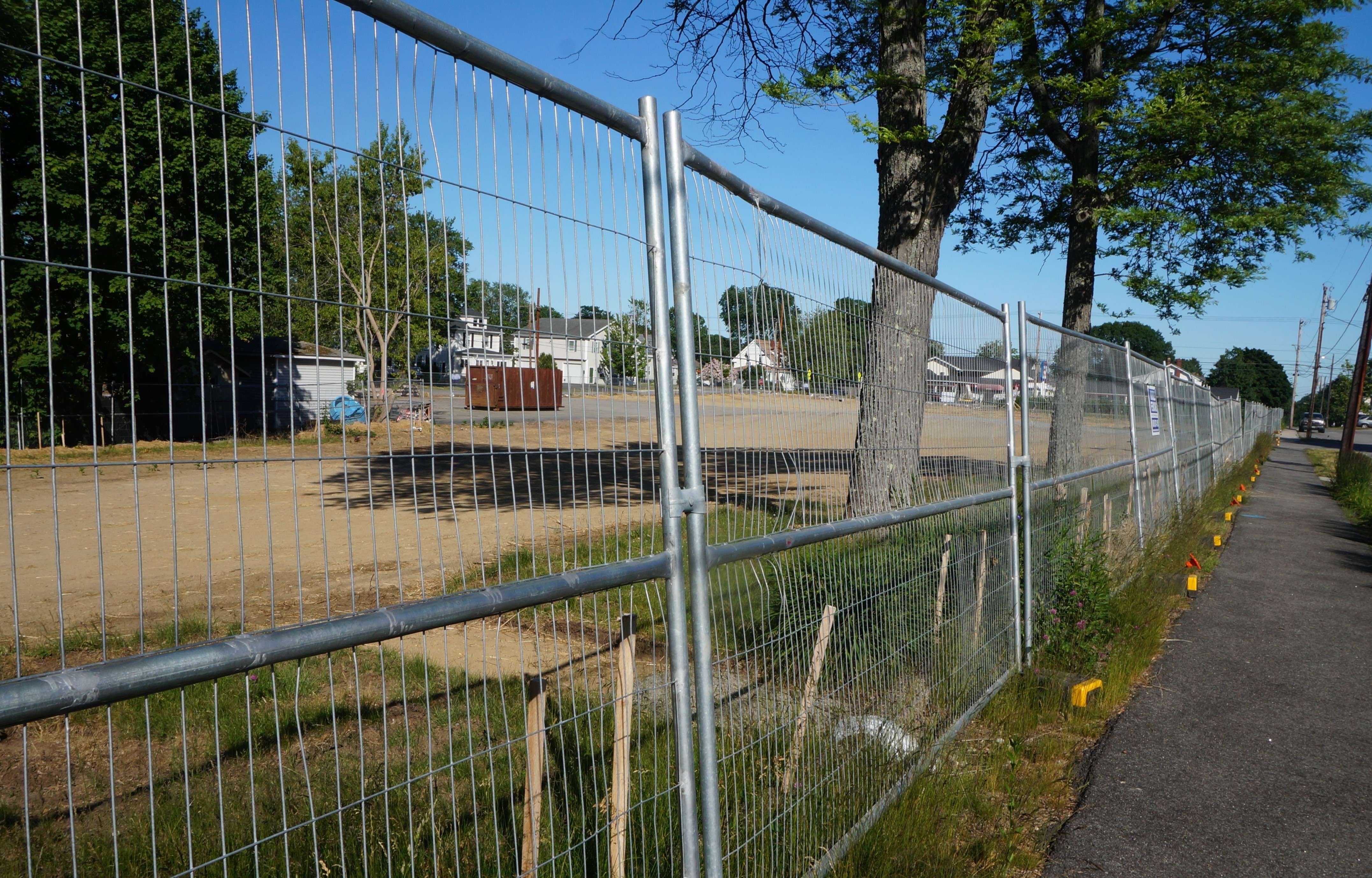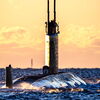
Portland area housing authorities on track to develop 500 units
The COVID-19 pandemic hasn't slowed down development projects by the Portland, South Portland and Westbrook housing authorities — between them, 499 units of housing are in the works.
Construction on housing for low and moderate-income residents of the area is critical, the trio said this week. But the authorities have also focused on efforts to get people into apartments, or keep them in, and make sure tenants are safe with the challenges the pandemic has brought.
"It's kind of business as usual," said Mike Hulsey, executive director of the South Portland Housing Authority. "We've closed our doors, but we're still open."
Cheryl Sessions, executive director of the Portland Housing Authority, which has more than 6,000 tenants, said taking care of those who use their services is what housing authorities do. In the first month after the Portland authority started working virtually, they "leased up" 16 families.
"They're safe," Sessions said. "Safer than they'd be couch surfing, or homeless."
Portland and South Portland authorites were among 19 in the state to share $2.45 million in federal CARES Act fuding to help prepare for, prevent and respond to COVID-19 in public housing developments.
The two authorities, and the Westbrook Housing Authority, have collaborated on a variety of efforts to help tenants and the community during the shut down, but also with an eye on the future and the need for housing. The three directors talked to Mainebiz in a Zoom virtual interview this week.
Construction projects, which generally take about three years from planning to completion are going strong, and also must be finished on time if developers are to take advantage of low-income tax credits. Most of the developers are mixed-income, with a percentage put aside for those who make 60% of the areas's median income or less, a requirement for low income tax credits.
But more importantly, the directors said, developing affordable housing is as important as ever.
"We're not going to waver," said Chris LaRoche, executive director of the Westbrook authority. The pandemic "will pass," but the need for housing will remain critical.

Major projects underway
Some of the major projects in the three cities are:
Boyd Street Apartments, 58 Boyd St., Portland. This 55-unit building, constructed by Wright-Ryan, is close to completion. The $11.2 million six-story building is on .48 acres at the site of the former community center, and is a block west on Boyd Street from Bayside Anchor, a 45-unit mixed-income building the Portland authority development in partnership with Avesta Housing. LIke Bayside Anchor, Boyd Street apartment is mixed-income, with 80% of the units for those who earn 60% of the areas's median income.
Front Street Apartments redevelopment. Portland Housing Authority also has plans to renovate and redevelop 60 and 70-year-old public housing built in the urban renewal era throughout the city. Underway currently is the Front Street project, at 34 West Presumpscot St., in the city's East Deering neighborhood which, in phases, will turn 50 aging units into 110.
Thornton Heights Commons.The South Portland development, at 611 Main St.on the site of St. John the Evangelist church, and the school and rectory that went with it, which were recently razed. The construction loan is closing next week, and development will begin shortly after, Hulsey said. Commercial space on the first floor will be leased, with Malone Commercial Brokers as the leasing agent. The project will also include three house lots that the authority will sell, as well as another lot for the community, which could be community gardens or a playground. The $7.3 million 49,995-square-foot building is designed by CHA Architecture.
Robert L. Harnois Apartments. Construction of the Westbrook Housing Authority's 61 units of senior housing is on schedule to be finished by the end of the year. It's the first phase of a 91-unit project that's a collaboration between the housing authority, Westbrook Development Corp. and Anew Development. The 60,000-square-foot, $9 million project is at 70 Ruth Hunton Court, part of the housing authority's campus. The second phase, the 30-unit Lewis H. Emery apartments, will begin on the seven-acre site this summer.

Portland adding housing, new and old
The city of Portland is in the midst of a plan to add 2,257 housing units by 2027. Sessions said that over the next five years, the authority will play a big part in helping the city reach its affordable housing goals.
The authority is not only adding new construction, like Boyd Street Apartments and Bayside Anchor, but also renovating aging urban-renewal era public housing in East Bayside, East Deering, and other spots in the city. The authority manages 1,226 apartments and provides another 1,975 through subsidized vouchers, providing housing for more than 6,200 people.
The authority's "strategic revisioning" plan, which began in 2015, involves a different way of looking at how people live than decades ago. it adds density and also focuses on community they are in, and how to access services, transporation and more. It also makes the buildings more accessible and energy efficient.
There are challenges, Sessions said, particularly for the older urban renewal-era housing. The projects are being done in phases, which means shifting residents, many of them elderly, to other living quarters. The Front Street project also was built on a landfill and requires brownfields mitigation.
The authority is also part of the group developing the former Mercy Hospital site in the West End, a project that's still in the planning stages

South Portland mutliple projects
The 42-unit Thornton Heights project is an ambitious one, on a large lot that once housed St. John the Evangelist Church, which the Portland Diocese closed in 2013. Besides three floors of one, two and three-bedroom apartments, it will have 7,500 square feet of ground-floor commercial space and three housing lots, which will be sold.
"We are looking for a commercial tenant that will benefit the neighborhood, such as small market," Hulsey said. Parking for the building will be behind it.
The apartment breakdown includes 25 one-bedroom units, 10 two-bedroom, but also seven three-bedroom, a much-needed size, Hulsey said.
"There's a real shortage of three and four-bedroom apartments," Hulsey said. "They're hard to come by." The city's housing authority has 40 families on the waiting list for apartments.
He, Sessions and LaRoche said that one issue, related to the pandemic, is "people are just not moving" including college students, who normally leave once the school year ends. But increasing short-term rentals add to it too, as well as the fact that landlords are reluctant to add apartments to the housing authority's rolls.
South Portland manages 735 apartments in the city of 25,600.
The city is also also working with Habitat for Humanity of Greater Portland, creating eight house lots in the same area of the city, and is in the planning and development stages for two senior housing projects totaling 103 units.

Westbrook chipping away
Westbrook is continuing it's effort to chip away at a housing waiting list that tops 2,300 people — and that's just those 62 and older.
The developments are the latest for the authority, which oversees 557 apartments in the city of 18,700, and just some of what's planned for the next few years.
LaRoche said the 61-unit Harnois building will be occupied by the end of the year, and the 30-unit Emery building will likely start construction by August.
The authority is also beginning work on two 40-unit projects that may get underway by next year, he said.
The authority in 2018 completed construction of the 38-unit Dr. Arthur O. Berry Apartments, as well a $5.5 million renovation of Larrabee Woods and Riverview Terrace, a total of 83 units, which was named one of six "notable developments" In the state by the Maine Real Estate and Development Association last year.
Doors closed, but business open
The three housing authorities have partnered on a variety of projects since March, including on food access through school departments and well-being checks on residents.
Maintenance staffs have been busy with extra cleaning required, prompting South Portland to even do some hiring.
Sessions said that the maintenance crew has stepped up in a big way, in what can be a stressful environment, given possibility of exposure to the virus. "I can't say enough about the crew," she said. "They rushed into the breach."
Portland enlisted Americorps volunteers to help with well-being checks, and also has provided tablets to some residents so they can take advantage of telehealth.
One efficiency that's emerged is that many things that were done in person, such as leasing, are now happening through email and other viritual ways, and some of that will probably continue once the crisis is past, the three said.
Sessions said that the authority has seen a large amount of job loss and reduction among its tenants because of the pandemic, but the authority makes sure the rent is taken care of.
Hulsey said that's a factor landlords may want to consider in making property available for housing authority subsidies. "If our tenants lose income, they still get paid."
LaRoche said, too, that public housing, and its expansion, adds to the overall economy, not only helping ease the strain on municipalities' general assistance budgets, but adding construction jobs and residents who are consumers. Cumberland County public housing, he said, "infuses tens of millions of dollars into the economy."
The pandemic crisis "affirms that Public Housing Authority-supported affordable housing is the model and structure that can stabilize the community without interruption," he said.










0 Comments